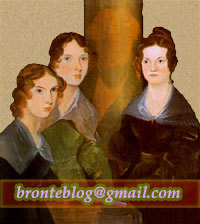An exceedingly rare painting by the English author Emily Brontë has been scooped at auction by the Brontë Parsonage Museum, which occupies her former home. The whimsical portrait of a woman with dark, wind-swept hair who is encircled by a loose, bright blue cloak inspired a bidding war when it was offered by Forum Auctions on March 27. It sold to the museum for a hammer price of £32,000 ($42,000), trouncing its high presale estimate of £20,000 ($26,000). [...]
“Emily is probably the most enigmatic of the Brontës,” according to the Brontë Parsonage Museum’s principal curator Ann Dinsdale. “She died at the age of 30, and very few manuscripts or letters by her have survived. It’s extremely rare to see anything associated with Emily coming on the market, making this painting of great importance.”
The North Wind (1842) was painted when Emily was still in her early 20s and studying with Charlotte at the Pensionnat Heger, a girls’ boarding school in Brussels. It was produced after an engraving of “Ianthe” (Lady Charlotte Harley) in the second volume of Finden’s Illustrations of the Life and Works of Lord Byron from 1842.
This origin is particularly fitting for Emily. “Most writers on the Brontës would agree that Byron was probably the greatest literary influence on Emily’s work,” said Dinsdale.
The auction catalogue notes how Charlotte’s letters record Emily having taken drawing lessons while in Brussels, and it appears she left this particular artwork behind when returning to England. The Pensionnat Heger was run by Constantin Georges Romain Héger, and Forum Auctions believes the work was mostly likely in his possession, passing down to a descendant and then remaining in private collections ever since. [...]
Though several Brontë siblings, including Charlotte and their brother Branwell, made some paintings, very few of those made by Emily survive.
“We found no auction records for drawings or watercolors by Emily Brontë but used precedent for equivalent drawings by her sister Charlotte to help a gauge price point,” said Rupert Powell, managing director of Forum Auctions and rare books specialist on the BBC’s Antiques Roadshow. “Certainly, therefore, drawings by Emily are extremely rare on the market, and a full watercolor especially desirable.”
The watercolor was purchased thanks to the Brontë Society’s acquisitions fund, which crowdsources donations from members of the public. Though there were several lots in the auction that Dinsdale would have liked to bid on, her team did not have time to launch an appeal and had to prioritize how to target their funds.
“It was very tense when lot 53, Emily Brontë’s painting, came up, as the likelihood was that it would disappear into a private collection,” she recalled. “The bidding seemed to go up very fast, then there was a very tense pause before the gavel came down and I knew that the painting would be coming to the Brontës’ former home in Haworth. It was a very emotional moment for staff at the museum.”
The artwork will be assessed by a conservator before going on permanent public display at the Brontë Parsonage Museum. (Jo Lawson-Tancred)

%20(1).jpg)







0 comments:
Post a Comment